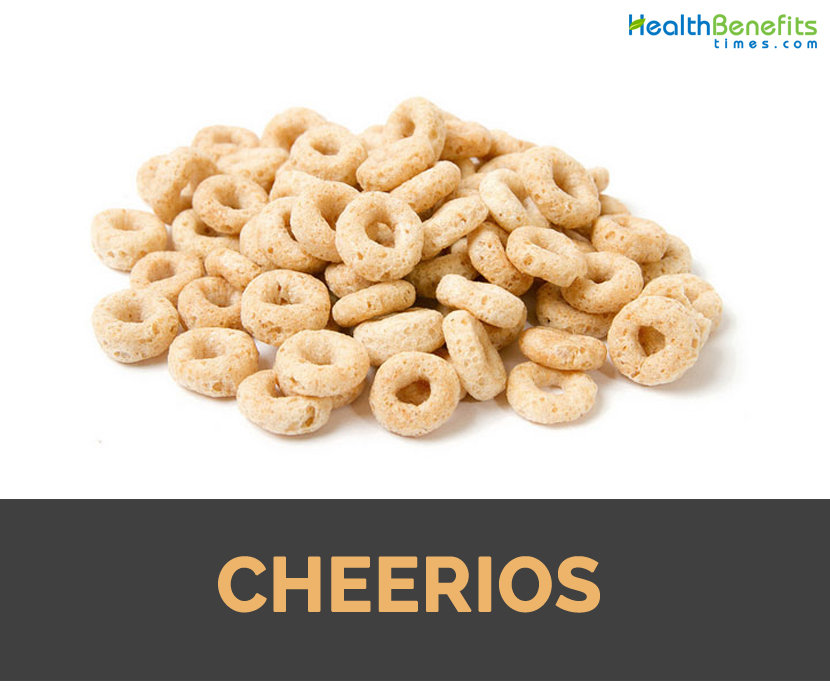History
In May 1, 1941 Cheerios was acquainted as CheeriOats. In 1945, the name was modified to Cheerios. Cinnamon Nut Cheerios was the variation of original Cheerios in mid-1976. Honey Nut Cheerios, the second one got introduced in 1979. General Mills got success with highly effective marketing, sales was about 1.8 million of Honey Nut Cheerios in its first year.
Side effects
Cheerios might lead to short term or long term side effects:
Short-term side effects: Cramps, diarrhea, nausea
Possible long-term side effects: Weight gain, diabetes, weakened immune system, elevated blood sugar
Uses
- A warm bath of powdered Cheerios soaked in oats for 30 minutes provides relief from itching from poison ivy, chicken pox, poison oak and pain from sunburn.
- Apply a paste from ground Cheerios, honey and lemon juice. Apply to the face and leave for 10 minutes. Rinse with warm water.
- Powdered Cheerios is used to thicken gravy, beef stew and soup.
- Intake of bowl of dry Cheerios breakfast cereal eases nausea and vomiting.
Other facts
- Cheerios could be found in various flavors such as banana nut cheerios, honey nut cheerios, chocolate cheerios, frosted cheerios, yogurt burst cheerios, cinnamon burst cheerios etc.
- It has not added color or artificial flavors.
- Cheerios has no saturated fats in it so it is cholesterol free and not harmful for fat persons and heart patients.
References:
https://www.isitbadforyou.com/questions/are-cheerios-bad-for-you
http://www.wackyuses.com/wacky/cheerios.html
https://www.didyouknow-facts.com/food-facts/10-cheerios-nutrition-facts.html
Comments
| Cheerios Quick Facts | |
|---|---|
| Name: | Cheerios |
| Shapes | Solid torus |
| Calories | 104 Kcal./cup |
| Major nutrients | Iron (101.13%) Vitamin B-12 (79.17%) Vitamin B9 (50.00%) Manganese (43.39%) Vitamin A (39.57%) |
| Proximity | Amount | % DV |
|---|---|---|
| Water | 1.05 g | N/D |
| Energy | 104 Kcal | N/D |
| Energy | 436 kJ | N/D |
| Protein | 3.47 g | 6.94% |
| Total Fat (lipid) | 1.85 g | 5.29% |
| Ash | 0.79 g | N/D |
| Carbohydrate | 20.5 g | 15.77% |
| Total dietary Fiber | 2.8 g | 7.37% |
| Total Sugars | 1.26 g | N/D |
| Minerals | Amount | % DV |
|---|---|---|
| Calcium, Ca | 100 mg | 10.00% |
| Iron, Fe | 8.09 mg | 101.13% |
| Magnesium, Mg | 32 mg | 7.62% |
| Phosphorus, P | 100 mg | 14.29% |
| Potassium, K | 177 mg | 3.77% |
| Sodium, Na | 139 mg | 9.27% |
| Zinc, Zn | 3.75 mg | 34.09% |
| Copper, Cu | 0.108 mg | 12.00% |
| Manganese, Mn | 0.998 mg | 43.39% |
| Selenium, Se | 7 µg | 12.73% |
| Vitamins | Amount | % DV |
|---|---|---|
| Water soluble Vitamins | ||
| Vitamin B1 (Thiamin) | 0.364 mg | 30.33% |
| Vitamin B2 (Riboflavin) | 0.028 mg | 2.15% |
| Vitamin B3 (Niacin) | 5.012 mg | 31.33% |
| Vitamin B6 (Pyridoxine) | 0.501 mg | 38.54% |
| Vitamin B9 (Folate) | 200 µg | 50.00% |
| Folic Acid | 194 µg | N/D |
| Folate, food | 6 µg | N/D |
| Folate, DEF | 335 µg | N/D |
| Choline | 7.3 mg | 1.33% |
| Vitamin B-12 (Cobalamine) | 1.9 µg | 79.17% |
| Vitamin B-12, added | 1.9 µg | N/D |
| Vitamin C (Ascorbic acid) | 6 mg | 6.67% |
| Fat soluble Vitamins | ||
| Vitamin A, RAE | 277 µg | 39.57% |
| Vitamin A, IU | 924 IU | N/D |
| Retinol | 277 µg | N/D |
| Lutein + zeaxanthin | 45 µg | N/D |
| Vitamin E (alpha-tocopherol) | 0.11 mg | 0.73% |
| Vitamin D (Cholecalciferol) | 1 µg | 6.67% |
| Vitamin D (D2 + D3) | 1 µg | N/D |
| Vitamin D | 40 IU | N/D |
| Vitamin K (phylloquinone) | 0.6 µg | 0.50% |
| Lipids | Amount | % DV |
|---|---|---|
| Fatty acids, total saturated | 0.448 g | N/D |
| Lauric acid (dodecanoic acid) 12:00 | 0.008 g | N/D |
| Myristic acid 14:00(Tetradecanoic acid) | 0.004 g | N/D |
| Palmitic acid 16:00 (Hexadecanoic acid) | 0.356 g | N/D |
| Stearic acid 18:00 (Octadecanoic acid) | 0.033 g | N/D |
| Fatty acids, total monounsaturated | 0.644 g | N/D |
| Palmitoleic acid 16:1 (hexadecenoic acid) | 0.003 g | N/D |
| Oleic acid 18:1 (octadecenoic acid) | 0.638 g | N/D |
| Gadoleic acid 20:1 (eicosenoic acid) | 0.013 g | N/D |
| Fatty acids, total polyunsaturated | 0.672 g | N/D |
| Linoleic acid 18:2 (octadecadienoic acid) | 0.613 g | N/D |
| Linolenic acid 18:3 (Octadecatrienoic acid) | 0.019 g | N/D |



